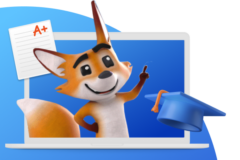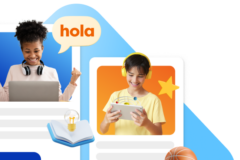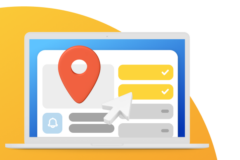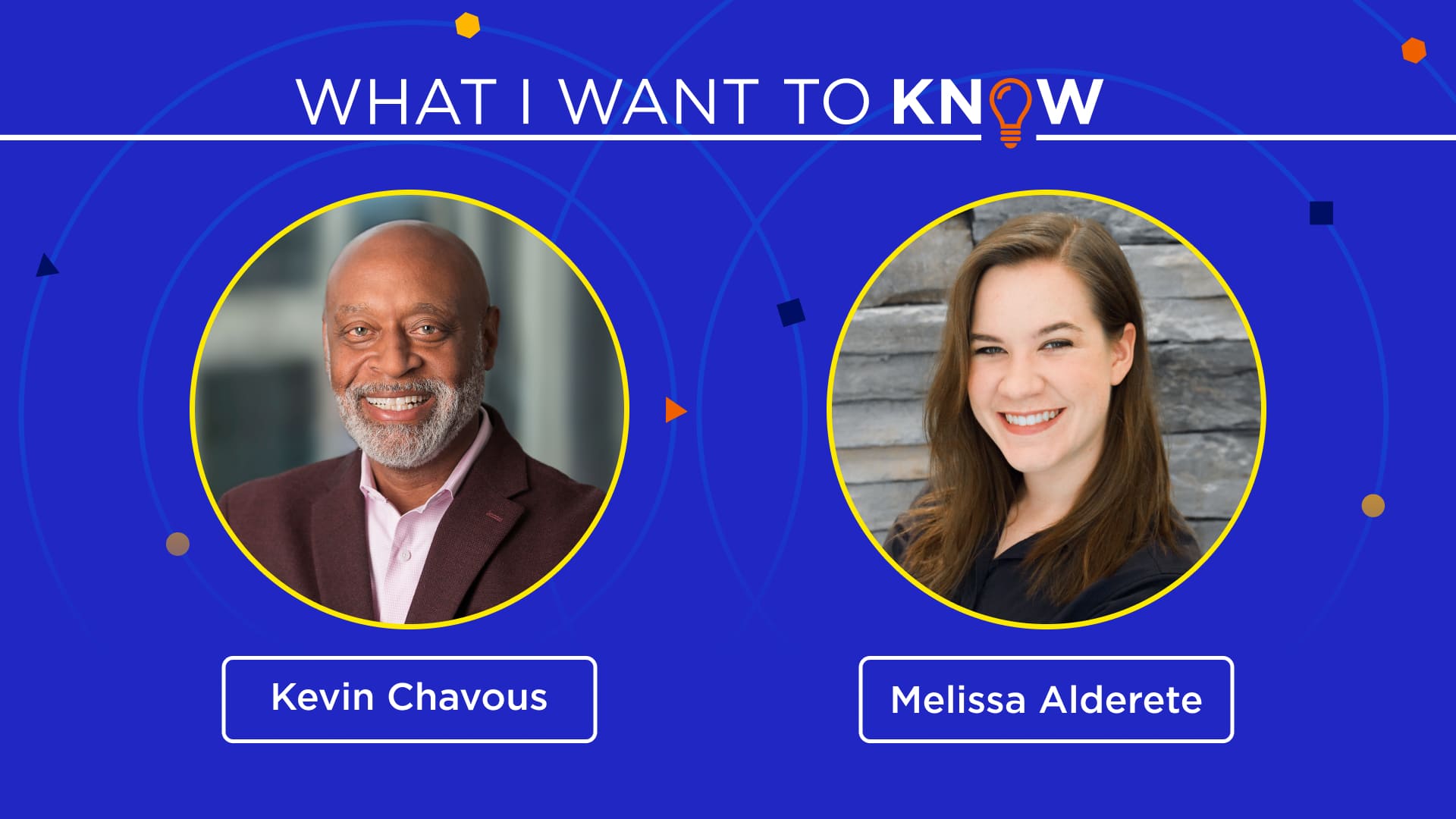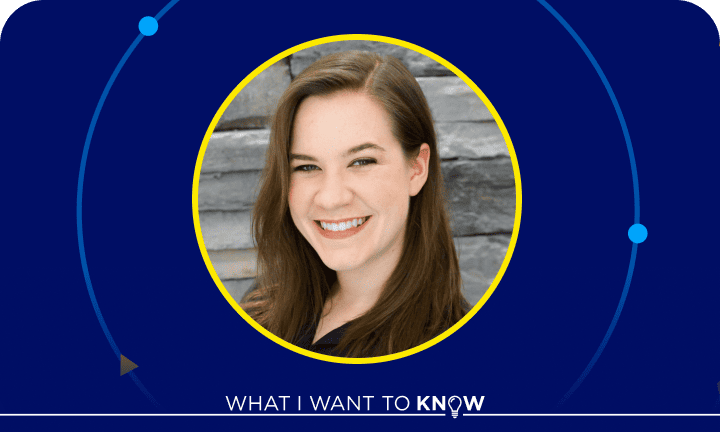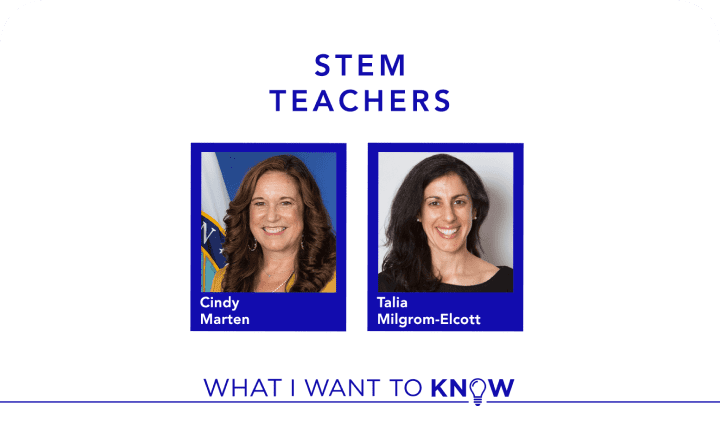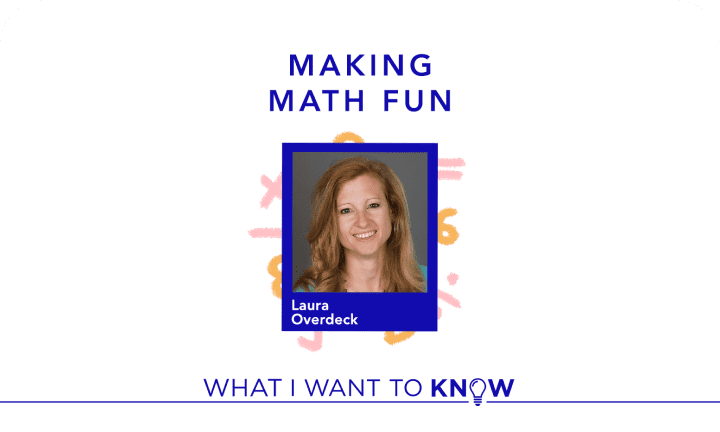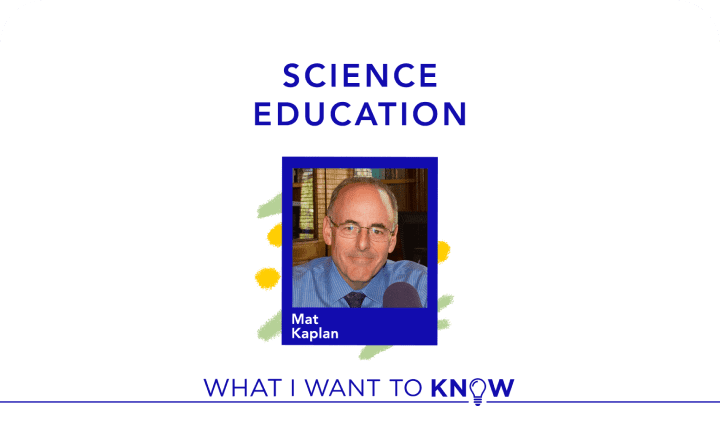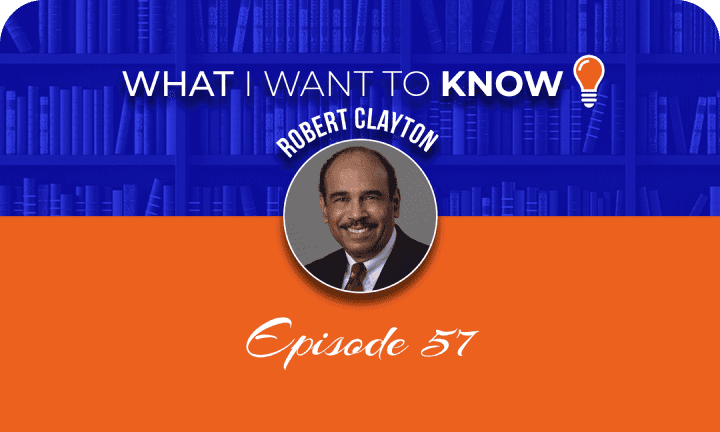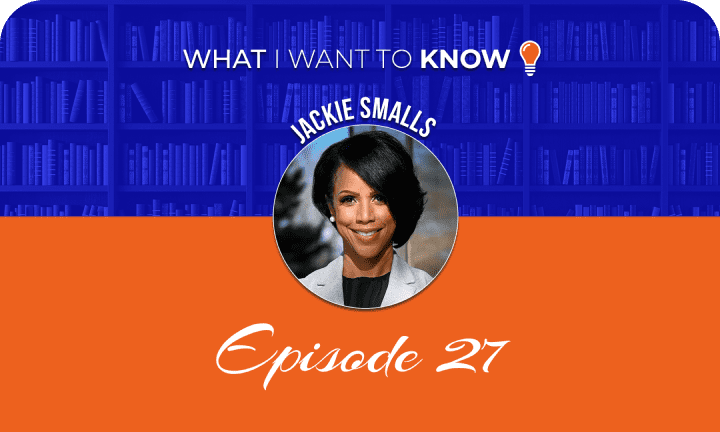April 10, 2024
EP. 149: How can we encourage young girls to take an interest in science?
Research shows that girls and young women lose interest in science and math as they move through their school years. And now, women make up only 28% of the STEM workforce.
How can we use science to inspire kids? Why is it important for girls to see themselves represented in the field? And how can we encourage young girls to take an interest in science?
In this episode, Melissa Alderete joins Kevin to discuss how we can encourage young girls’ interest in science.
Listen on: Apple Podcast, Spotify
Meet Melissa
Melissa Alderete founded Science Girl’s Lab, an organization that provides science activities, experiments, and experiences to teachers, students, and their families to inspire the next generation of scientists.
Melissa: I think a lot of parents, myself included, sometimes when you think of a science activity, you’re thinking weeks long. “I have to go to the store. I have to gather all the stuff.” No, your kitchen cabinet and your craft bucket is your science lab.
Kevin: Research shows that girls and young women lose interest in science and math as they move through their school years. And now women make up only 28% of the STEM workforce. How can we use science to inspire kids? And why is it important for girls to see themselves represented in the field? And how can we encourage an interest in science in young girls? This is “What I Want to Know.” Today, I am joined by Melissa Alderete to find out.
Melissa Alderete is the founder of Science Girl’s Lab, an organization that provides science activities, experiments, and experiences to teachers, students, and their families, all to inspire the next generation of scientists. She joins us today to share how we can encourage an interest in science in young girls. Melissa, welcome to the show.
Melissa: Thank you for having me. It’s going to be an absolute joy. I’m really excited. This is going to be fun.
Kevin: Well, I’m excited as well. And I have to ask the Science Girl, because that’s what you go by. You’re the Science Girl, and all of New Mexico knows you. But what was your inspiration? I mean, these things just don’t happen overnight, and having watched your videos, so much of it is based on your passion for the subject matter. Where did that come from?
Melissa: Well, as you said, it doesn’t come out of nowhere. And it wasn’t just exactly one thing. I will have to say my family was very encouraging in the realm of science, STEM, STEAM. My dad is an engineer, and my mom worked in a lab, when she was in college, before she started having my sister. And that influence kept me interested in science. But there wasn’t a big spark, a big idea until I think it was around 2011. I was volunteering at an international museum conference that Albuquerque was hosting, because I was volunteering and interning at the Explora Science Museum, which is a children’s hands-on museum here in Albuquerque. Very amazing. If you come visit Albuquerque, you have to go. And so we were hosting it, and so I was able to volunteer and I saw Steve Spangler. I don’t know if you know of him.
Kevin: Oh, yeah.
Melissa: But he’s in Colorado. But he’s been on “Ellen.” And he’s really big on encouraging teachers and encouraging people for the fun and the hands-on and getting hands-on science into classrooms. He performed at this conference. I was able to see it. And as a 13-year-old girl, I came away excited, inspired, curious, wanting to know more. And it hit me. That’s what I want to do. That’s what I want to create in people is that excitement, that wonder, that just spark of inspiration for all things STEAM. So that was the moment where I realized, “I want to be a science performer.” I go home, I tell my mom and dad. I was like, “I want to be a science performer.” And oh, my parents are so gracious with me. My mom will admittedly say her first thought was, “How is she going to put food on the table?” But she was also incredibly supportive.
And over the entirety of my high school, I developed skills. I developed theatrical skills. I did every science activity I could in my science activity book, and I blogged about it. And I developed public speaking skills. And for my senior project, my parents were, you know, very supportive in all my endeavors. And I was fully expecting to become a full-time educator at the Explora Science Museum I mentioned before
But I had told them I want to try the science performer thing out. And so that’s where Science Girl’s Lab came out of, was those three weeks I planned to do a science show, and then it exploded into this thing that teachers could use to help get their kids involved and get them excited and give girls a character, Science Girl to see themselves in. And it’s just grown from there for the past eight years. So it’s been really fun.
Kevin: Well, it absolutely is phenomenal. And when I looked at your website and looked at Science Girl’s Lab, I mean your positive energy, it was infectious. It leaped out off of the screen, the video, and it’s so clear that you’re doing what you’re called to do. And all the things you talked about that you did from the time you saw Spangler at age 13 until today, you can tell that they’ve been embodied in your work. From the theater training, actress, performance, and subject matter expertise, and, on top of that, just the ability to break down in a fun and cool way some of the things that many people are afraid of when they think of science. So I will say that it was fun to watch. It’s fun to watch you.
Let’s talk a little bit about definitions, because you mentioned STEAM, and I mentioned STEM. Talk about that.
Melissa: So STEM is probably a more widely known science, technology, engineering, and math. And when we talk about STEM, we talk about all those things in there, all the skills that students need for a career in those areas. So there’s that. And then there’s STEAM, and that’s where we add the A into it, and that’s art. There is, especially in New Mexico, a bigger push for art. We are one of the art capitals of the country. And so we want to insert art into STEM. And it may not be what you think.
So when I see art in STEM, I have the art of performance. That is an art. But there’s also the art of color. There’s a lot to do with science and color, and there’s an art in crafting and engineering and creating. You know, there’s so much intricacies in the STEM skills, and to add art into it is just so easy. So, especially in my early years, I like to say I like to put the A in STEAM to add the art aspect. And I think for kids, especially, to know that science, technology, engineering, and math is artistic and it can be beautiful is another level of engagement for our students.
Kevin: Yeah. And that makes a lot of sense. That’s why I wanted you to sort of call out those distinctions. The number suggests that many kids shy away from STEM. They shy away from STEM largely because, on the one hand, there are budget cuts, so they may not be the art classes in some school districts across the country. But in addition to that, many of the kids, the majority of the kids who receive math classes in elementary school are being taught by teachers who aren’t certified to teach math. So there’s this sort of fear associated with the ability that some kids feel they have to even embrace math. And math has become and a lot of the engineering, you know, classes have become viewed as a chore, or are very hard as opposed to fun.
What I like about what you’ve done as the Science Girl of New Mexico is you’ve broken that down and made it fun. Talk about that nexus of dealing with the practical challenges that school districts have to provide, one, people who really are trained to teach the stuff, and on the other hand, making it fun in a way that will encourage students to not be frustrated before they even get started.
Melissa: And that is a huge challenge for school districts, especially with educators continually challenged in not only math, but other areas. You know, I feel for our teachers and how hard they work. And as you said, they may not be qualified for math or science or biology.
To make science interesting and fun, I personally believe we need to show that it’s more than words out of a textbook. And that, it’s an extra challenge. And that’s why I do what I do, because I understand for kids to even get involved and not get scared is there needs to be that excitement, that spark, that inspiration I was talking about earlier to understand, “Okay, this is a skill that I can build and learn, and I’m not limited by this worksheet.” Science is not limited to this paper project, and I’m not dumbing down those paper projects, those skill builders. But there needs to be more than just that.
As far as teachers needing to be qualified, I am very big believer in it takes a village. And not every person can be skilled in every single area to teach students this. So I know a lot of STEM or STEAM-focused schools here in New Mexico will often bring in PhDs and people who are skilled to help get kids excited, get them jump started, get them familiar with content that they may not have been exposed to before. There is a huge gap because here in New Mexico, we have the most PhDs per capita in the United States, and yet our education is usually 49th or 50th in the United States. So there is a huge gap here in New Mexico, and I’m sure we could figure out this gap in just our education system as a whole, and we want to fill that.
And I think to be able to do that, we need to be able to bring in more people. Let the teachers teach well what they can teach well, and then bring in people to support those areas that are a lot more difficult. People may not know this about me, but I was home-schooled. And there were things that my parents just it didn’t click for them. Say history, didn’t click for them. But I took classes with other people that they didn’t get science, but World War II history, they were well-versed, and I learned so much from that.
So if we can have more collaboration, look for nonprofits in your area that want to have classrooms come in and do coding, to do activities. We have Air Force Research Laboratory here in New Mexico, and they hold classes for free for teachers. They just need to bring their classroom in, and they’ll teach them, rocketry, coding, all these other things. And I’m sure there’s those resources wherever our listeners are at. We just need to be able to connect our teachers with them.
Kevin: Yeah. I think that is such a really, really good idea. I love that because right now I think there’s too much of a disconnect between K-12 education and higher ed anyway, but just about every jurisdiction has a local college or community college. And just sort of teasing out what you said, Melissa, what if, in this imaginary world of tomorrow for kids, what if it was commonplace for the local college professor in math to step in during some of these sessions in the neighborhood K-12 school, elementary school, or high school, and add those contributions to the algebra class, to the geometry class? I mean, I think it would be pretty phenomenal. And we have too little of that. And the more we do that, the better.
And the other thing you said, which I also absolutely love, is that science is more than just a piece of paper or what’s in a book. And I think that some of the, I don’t know, I can say old school because I’ve earned that, you see my beard, but I think some of the old-school teaching suggests you need to learn the material before you go and do the practical stuff. And I think that part of learning the material is not, as you said, reading the book. But my goodness, when I look at your videos, how can a kid not get excited by some of those experiments and how you bring science to life? In fact, if you do that in conjunction with sort of the academic book stuff, it makes more sense. Don’t you find that to be the case?
Melissa: Absolutely. Some of the lessons that I remember learning most deeply was I was reading the textbook, I was reading the science, and it was talking about density, let’s talk about density. And I remembered back when I was younger, when my mom was teaching me about density by adding salt to a water cup, and then the grape didn’t sink anymore, it floated. And it was because I had that connection to a real-world, hands-on activity that I could learn, in high school, when I was reading a whole lot deeper than I would have if I didn’t have that. So, and as you said, how can kids not get excited when they can get their hands messy, or they can feel the exploding toothpaste warm because it’s an exothermic reaction? And when they hear that again in high school, they’re going to be like, “I know what you’re talking about.”
And all of a sudden they have this connection, this fun, these good memories, these positive experiences with STEAM, with, you know, what we were talking about earlier. You know, a lot of people shy away from because they just think math and, “I don’t understand how biology works,” you know, all this kind of stuff. I think it’s very important, especially in the elementary ages, to spend time just playing with science. And as you could probably see in my videos, I don’t explain a whole lot of science, I just do it, because I understand once they read it, once they look at it in a video later on, they’re going to remember.
Kevin: Yeah. And to follow up on that, you gave the example the salt, the water, the grape. I saw a couple of your experiences that you shared. Talk a little bit about, give some examples of fun Science Girl experiments, experiences you share, just so the listening audience can get an idea of how you approach this practical aspect of making science fun.
Melissa: Absolutely. So if you go onto YouTube, you’ll see, I’ll call it “Science Girl’s Home Lab,” because all of the experiments, the activities I put together had the intention of you could find the materials in your home right now. And that was because during COVID, you couldn’t go to the grocery store very easily. So we wanted to have something for our students.
So one of them, probably one of the most simple and easiest is all you need is water, oil, food coloring, and an Alka-Seltzer tablet, and you can make a lava lamp. You grab a plastic bottle. You put some water at the bottom. You add oil on the top. You can talk about polarity, density, right? Water is more dense than oil. You add food coloring. Food coloring doesn’t mix with the oil, but it does with the water because of the polarity. Add a piece of Alka-Seltzer, all of a sudden it starts bubbling and you get this really cool lava lamp effect.
I don’t care if you’re 3 years old or 97 years old, it is fun, it is engaging for the whole family, and it doesn’t have to be complicated. It’s actually very simple. I think a lot of parents, myself included, sometimes when you think of a science activity, you’re thinking weeks long. “I have to go to the store. I have to gather all the stuff.” No, your kitchen cabinet and your craft bucket is your science lab. And it can be as simple as that.
And it’s a fun 15-minute activity. And if you do it on a Saturday afternoon, what a fun way to connect with your kids. If you do in the classroom, what a great end-of-week activity for the kids to look forward to. It doesn’t have to be expensive. The payout from it is way more than what you’ll put in, you’ll be surprised.
Kevin: You know, what’s fascinating about that is that you have reached thousands of students in New Mexico, and it’s clear that people are responding. Talk about some of those reactions that you get from teachers and students and parents when they see you in action, if you will, and particularly, you know, comments you may have received from people who really weren’t deeply immersed in science, or skeptical, and how that sort of turned around, because in looking at your work, and some of your videos, it was clear to me that you sort of change hearts and minds while you do what you do.
Melissa: Well, I really appreciate that, and that is my favorite part of what I do, is hearing from the kids and the teachers of how much what we provided in Science Girl’s Lab, how Science Girl, the character impacted young girls. That keeps me going, when it’s really hard to do the paperwork. So oftentimes, when I do a performance, afterwards, the kids want to come up to me and tell me the science stuff that they have done.
Now, on the surface that may not seem very impactful, but it’s actually very truly impactful, because they’re looking for a connection. They want to connect their experiences to the experience they just saw, that where they got excited, they felt something, they wanted to be a part of it. I love hearing that. I had one of my favorite, favorite stories is when I first did this, my first three weeks of doing Science Girl’s Lab, I had an intern at the museum come up to me and say, “Hey, my little sister was running around the house yesterday pretending to be Science Girl.”
It blew my mind. And that’s what Science Girl is. That’s why the name Science Girl is very generic, because I want every kid to be able to see themselves as Science Girl, you know, embody a character so that they can see themselves as a scientist.
Teachers, in particular, they come up to me and they tell me, “You came last year, they’ve been asking for you all year. I was able to take this into my classroom, and we talked about all the science behind it, and my kids were so engaged.” So it’s really neat to see I have a goal going out and to get the response that I’m getting kids engaged. We are sparking excitement and wonder, and teachers are feeling supported. Those are some major goals of mine. And it just blows my mind how much, it’s just amazing.
Kevin: One of the real cool things about Science Girl is the fact that it’s Science Girl. And I say that because women only make up 28% of the STEM workforce in this country. You just mentioned that part of your goal is to encourage all kids, but particularly girls to know that they can have fun with science and be a part of a potential science career. Talk a little bit about, in your experience, why you think the numbers are so low. And I say that in the context of when you look at, you know, college going and college graduation numbers, women’s participation is on the rise. If you look at in the medical field, in the legal field, women’s participation is on the rise. In the STEM field, not so much. Why do you think that is?
Melissa: This is a huge question with many aspects. And in my experience, there’s two big things that we need to be aware of if we want to encourage women entering into STEM. Number one, girls need to see examples of themselves in the field. Down in Socorro, which is just south of me, there’s New Mexico Tech, which is one of the top tech community colleges in the state for sure, if not this region. And they hold a middle school girl camp, where they sponsor middle school girls to come in. And all week, all they do is bring in all these lady PhDs, ladies in the STEAM fields, and they talk about it, and they teach these girls to code. And all of a sudden the girls have these examples of all the possibilities they have if they go into the STEAM field.
We’ve made huge progress in the last even 10 years of exposing how many women have gotten into science and how capable women are to get into science. And if there are any ladies out there wanting to get into STEAM careers, let me tell you, I was shocked to see how many scholarships are out there for young girls, young college girls to go into STEM fields. There’s a lot of resources out there, so that’s another thing, we need those resources.
The last big thing is the encouragement. And to realize, and I’m speaking in very general terms here, I know every person’s different and functions different, but in general, we women want to have a community to go into and to feel supported, to have that social aspect, that nurturing aspect. So we need to be able to encourage their skills, not their knowledge, encourage students’ skills in STEAM, and we need to give them opportunities to show their skills.
So get them involved in coding camps, STEM camps. There’s tech for girls out there or Girls in Tech, I’m sorry. And there’s so many resources to give the girls examples to encourage them. And there’s so many resources out there, for women in particular, to get into STEAM. So it just takes that spark that I always like to talk about, and then that support, that encouragement.
And to continue to give girls examples of women chemists, there’s Kate the Chemist. She’s an actual chemist. She’s so cool. I got to meet her. She was the first other science performer who was a woman, and we had the best time ever. But she has inspired so many young girls because she’s an actual chemist who is in that field teaching. And let me tell you, that’s inspiring.
And you don’t have to be a woman to inspire girls into science. Steve Spangler inspired me to do what I’m doing today. So if you are a male out there and you really want to encourage girls to do it, go do it. Your impact is just as important and valued. So I think I’ll digress there, but that is definitely . . . Those three aspects there is what I think we should focus on.
Kevin: Well said, Melissa, and I have one last question. This is what I really want to know. We have a number of school leaders, principals, teachers, administrators that listen to the show. What advice would you give to a teacher or a principal as to how they can begin the process of let’s just say moving away from a textbook approach to teaching science to kids and make it more fun and cool? And let’s assume that we’re talking about a school or a classroom that has been largely traditional in their approach, “Read these pages and, you know, you’ll get a test on it in two weeks.” What advice would you give in terms of how you begin the process of making a more fun experience for these kids as it relates to science?
Melissa: Those small steps, as we all know, are very important. I think there are so many great and short science videos you can show your class. You’d be amazed at how a kid will go home and take that balloon and baking soda and vinegar and, you know, inflate that balloon in a bottle just because they saw it in class. And you don’t have to pull out all the messy materials. So start there. I would start with videos personally, and then start having discussions around those videos.
I keep bringing up Steve Spengler, but he has a lot of great resources. His Sick Science, like Sick, S-I-C-K, Science videos, they’re like three to five, six minutes. And at the end, he always poses an extension question, “What would happen if X, Y, Z?” And you could stop the video and you can have this conversation around, “What do you think would happen? Want to go home and try it this weekend? Or maybe we could do it next Friday.” You know, those are simple steps we can take.
And as far as administrators, if you want to go big, one of the greatest things I’ve seen in my community is a lot of schools hold STEM nights, and all they do is they invite, as you could say, you can invite local colleges, the engineering department, the chemistry department to come in, bring something to show the kids, something to do with the kids that promote STEM and STEAM. And you just hold like a two-hour event, and the kids come in, go to different tables. I do them all the time. I set up a table, they come in. We have fun with science together, and then they go on to the next thing. And that is a very simple way to get your families involved too, because we want to build that supportive community, that supportive family around our students. So those are great ways to get started.
Kevin: Oh, those are great suggestions. One more though. They can also make sure they show their class Science Girl videos.
Melissa: Absolutely.
Kevin: That’s another good way to get them excited and understand how it can be cool and fun. Melissa Alderete, thank you so much for joining us on “What I Want to Know.”
Melissa: Thank you for having me.
Kevin: Thanks for listening to “What I Want to Know.” Be sure to follow and subscribe to the show on Apple Podcasts, Spotify, or your favorite podcast app so you can explore other episodes and dive into our discussions on the future of education. And write a review of the show. I also encourage you to join the conversation and let me know what you want to know using #WIWTK on social media. That’s #WIWTK.
For more information on Stride and online education, visit stridelearning.com. I’m your host, Kevin P. Chavous. Thank you for joining “What I Want to Know.”
About the Show
Education is undergoing a dramatic shift, creating an opportunity to transform how we serve learners of all ages. Kevin P. Chavous turns to innovators across education, workforce development, and more to ask: “How can we do better?”
Related Podcasts
Listen to more podcasts about this topic.
Featured Resources
Discover more resources that address the topics impacting students, families, and educators today.

